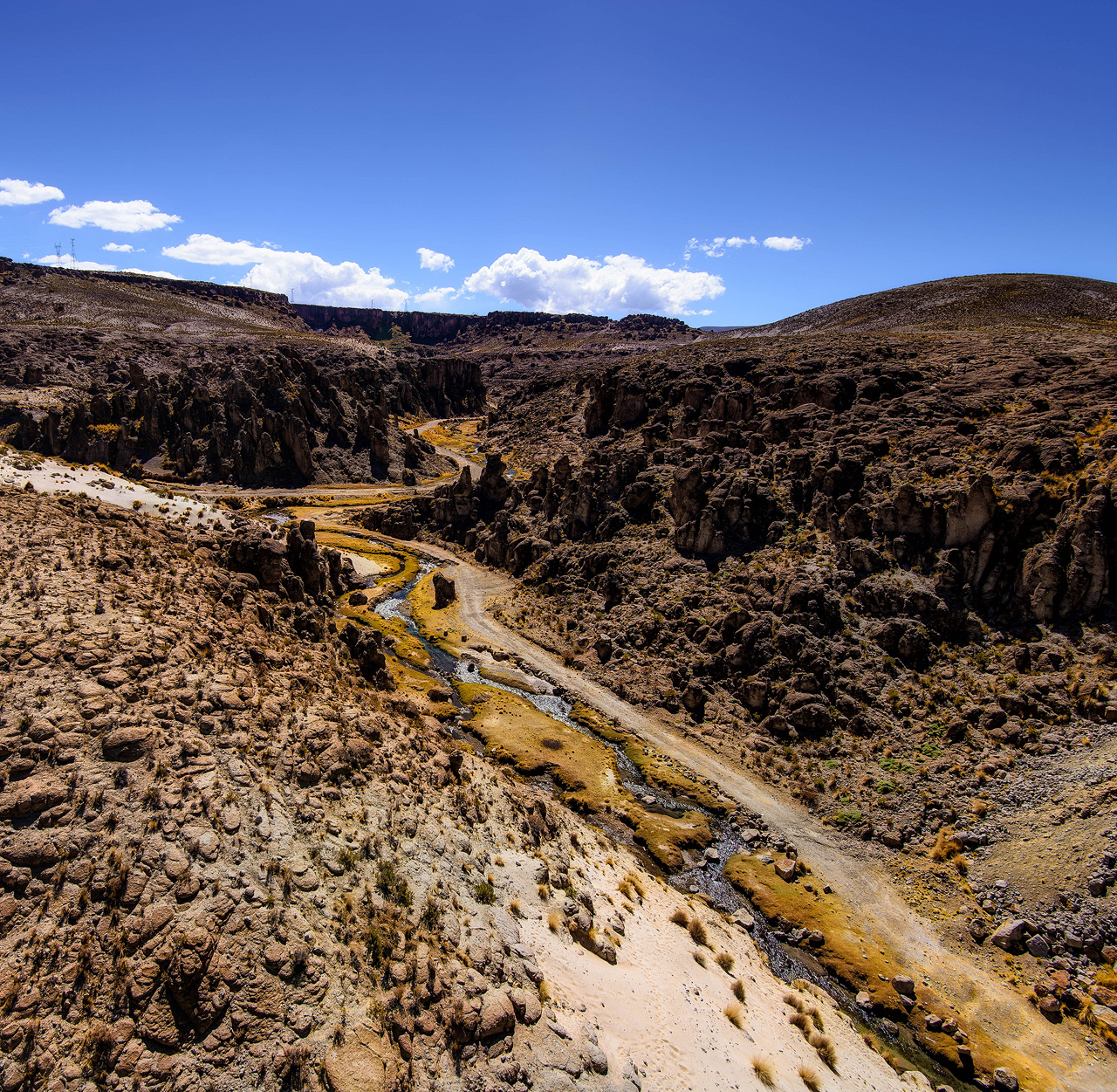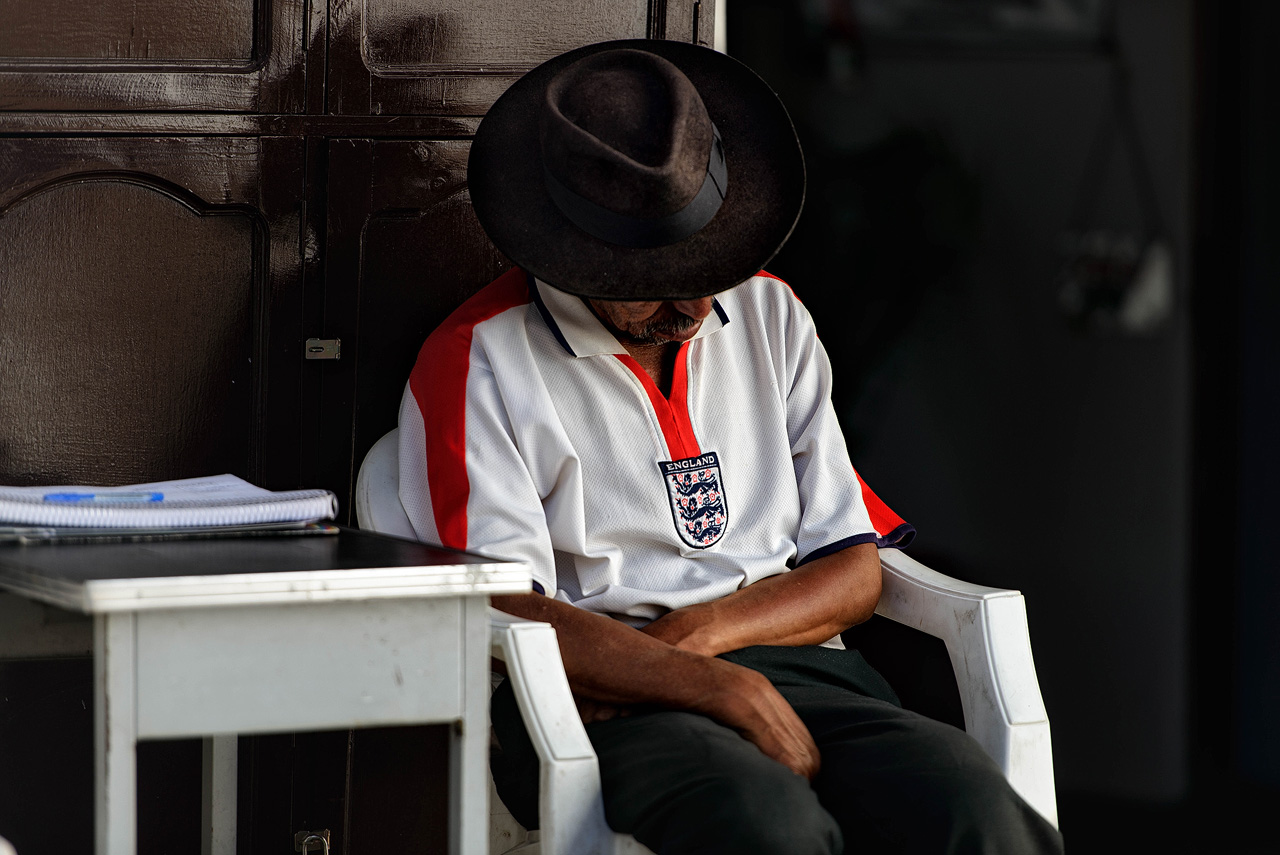ALTIPLANO PART 3: SALAR DE UYUNI TO SUCRE
Salar de Uyuni seemed to appear around us almost unexpectedly. One moment we were driving through a valley, and then the peaks to either side of us seemed to start receding into the distance at the same time as the sand and mud below the wheels gradually gave way to salt. All of a sudden we realised we were crossing the Salar, an ocean of flat whiteness that disappeared into the distance on all sides.
At first the salt plain felt and looked dirty and grubby, but as we got further and further into it, it became more and more pristine in it's whiteness, the sun reflecting brilliantly from the salt crystals.
It's such an alien landscape, a flat white ocean that was once upon a time an inland lake which tens of thousands of years ago dried up and evaporated into the 10000 square kilometre salt lake that remains today. Hundreds of kilometres across in any direction, it's altitude never varies by more than a meter across it's entire surface. Driving across something so flat, so vast and so white is an extraordinary experience. Raul told us that there were many instances of people setting out to drive across it and, underestimating the huge distances involved, running out of petrol in the middle. Then, deceived by the views of the mountains at the edge of the lake (some of which are over 5000 meters high), and thinking that it's possible to reach them on foot, dying of exposure or thirst in the middle of the salar. It's an unforgiving landscape, and although flamingoes make a home in some of the lagoons at the very edge of the salar, nothing lives on it. There's nothing to sustain life here.
We headed straight out towards the centre and very soon we could make out the Isla das Pescadores, a humpback shape on the horizon resembling a fish, which gives the island it's name. Nearby is the island of Incahuasi which has a small tourist centre where we headed to park amongst many other jeeps. It's one of the major tourist attractions in the area and a focal point for tours. We arrived a little after lunch, and after having something to eat at the small restaurant on the island, we wandered up towards the highest point of the island. It's not actually only a very brief climb, but at well over 3600 meters above sea level, even a short climb can take your breath away. The island is covered in coral and huge cactus. The coral comes from when the island used to be below the waters of the massive lake, and the cactus seem to cover every available surface.
We spent hours just walking around, enjoying the views across the magnificent salar and photographing the cactus before late in the afternoon heading back to Raul and his jeep. We headed due north towards the massive Volcano Tunupa, which sits at the most northerly edge of the salar and above the small village of Tahua where our hotel was located. I spoke with Raul and asked him if he'd mind stopping as I wanted to photograph the volcano as the sun set. I was hoping that the day's last light would illuminate the volcano from the side while in the foreground the raised bits of salt between the hexagonal plates of salt would also be picked out by the light. I set the camera up low and close to the ground and photographed as the light got lower making the shadows longer, and also, with the GoPro attached to the tripod, I made a time-lapse as well. It was a lovely session of photography, beautiful light in an astonishing location in the midst of a sea of flat whiteness.
We spent a comfortable night at the Takya do Sal, another hotel run by the same local cooperative as the hotels we'd spent the previous two nights on the altiplano in. This one however is built from blocks of salt, as are the beds and much of the furniture. The mattresses however were warm and comfortable, and despite the cold, we slept really well. The following morning we visited a local museum in the village where the owner has spent his lifetime collecting local tools and examples of handicrafts that went go generations. It was a fascinating collection.
After exploring the local village, we headed back out onto the salar, leaving the volcano behind us and heading all the way across to the southern side.
When we were almost there, we stopped briefly at the "Hotel do Sal", the original hotel made from salt blocks in the area. This one however was built actually out on the salt lake itself (rather than at the edges as all the other salt hotels are) and has now been closed. Out in the middle of the lake, there's no drainage, no water or plumbing to get water there, so running the hotel was problematic and it soon fell into disrepair. Now there are just some empty rooms, a rather sad shop and some of the worst toilets I've ever seen. Interestingly though it seems to function as a staging post for explorations out onto the salar for people staying at the local towns of Uyuni or Colchani. There's also a collection of flags and a salt sculpture made for when the Paris-Dakar rally passed through here some years ago.
After leaving we visited a place where the salt was extracted and cut into blocks. The process is really simple, squares are cut into the surface of the lake and then a flat shovel is sunk about 30cm into the salt and then block cut out. The blocks themselves are striped because each year a layer of dust and dirt forms on the salar, which then has a layer of salt form on top of it. In this way you can see how "old" each block of salt is in the same way that you can count the years of a tree from it's cross section.
Our last stop was at a small village of Colchani on the south eastern edge of the salar. There's not really much to see there, a tiny salt museum and some market stalls that sell the same kind of stuff that you find all over this part of Bolivia, but we did see some beautiful trucks that I couldn't resist photographing.
Then, we headed up to our hotel for the night where we said goodbye to our driver Raul, who headed home to the nearby town of Uyuni. By the standards of the places we'd stayed in since we left Chile, the Luna Salada was luxurious. The room was lovely and warm, the room incredibly comfortable with the typical salt construction and even large grains of salt covering the floor. It really was a lovely place and one that I would probably spend more time in should I ever return to Salar de Uyuni again. I photographed a lovely sunset from just outside the hotel before a wonderful dinner and a great night's sleep.
The following morning we were picked up by a different driver for our journey to Potosi. Pretty soon we were leaving the Salar behind and heading north across the hills and mountains of southern Bolivia. Again, the altitude was hard work as we headed up past 4000 meters but the scenery was stunning and we had to keep stopping to take photos of the view.
We reached Potosi some hours later and continued on to where we'd arranged to stay, a place called the Hacienda de Cayara, about 30 minutes drive from the city. I came across this place in the Lonely Planet and we'd decided to stay here based on the descriptions there. The drive to the village where it's situated was along some very bumpy dirt tracks, but it was well worth it when we arrived. The Hacienda dates back to 1557, when the Spanish first arrived and colonized this part of South America. It's a beautiful sprawling building, and apart from an American writer, who was there to interview the owner, we were the only people staying there. The owner's grandfather had bought the building early in the 20th Century, and later an uncle had made it his life's work to restore the property and catalogue it's contents, turning the Hacienda into a guesthouse to raise money for the project. When he died his nephew Artur took over the project and has continued with it to the present day. The building has such an amazing past, having survived through almost five hundred years of pretty tumultuous history. After dinner Artur showed us around the house and it's amazing treasures. Suits of armour and weapons carried over from Spain by conquistadors in the 16th and 17th centuries, books and texts from the same period, objects and works of art from Bolivia's independence, all lovingly preserved in this amazing building. There are original copies of Voltaire's works, weights for the local silver mines, shipwrights tools from when the Spanish first set foot in the continent.
You could feel the history there, it really was an amazing place brought to life by Artur and his stories. It was a fascinating experience, and a complete change of pace from what we'd been doing for the previous week or so. We spent a comfortable night in the Hacienda, then the following morning continued our journey by car to Sucre, the constitutional capital of Bolivia.
We'd planned to spend a couple of days in Sucre, just taking it easy and walking around the city. It was the first time we'd been in a sophisticated city since leaving Santiago, and we just wanted to get some of the travel dust out of our clothes, rest at a comfortable altitude and have a day or so with no travelling in it. It's a lovely city, the centre feels very colonial with it's white arched buildings and well manicured park, and we spent our time here relaxing in the sun, visiting museums and churches, and recharging our batteries before moving on to the final stage of our journey in La Paz and Titicaca.
After our second night here, we climbed into a taxi and headed to the airport for the short flight to La Paz.



















